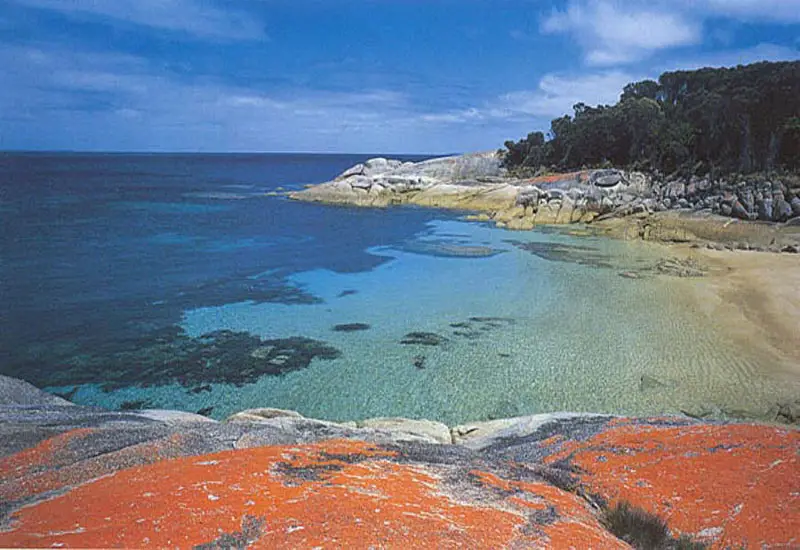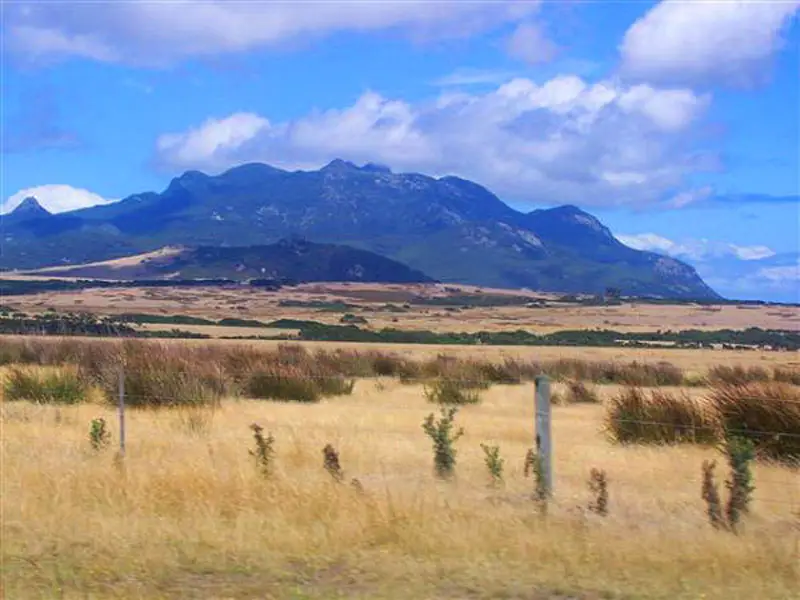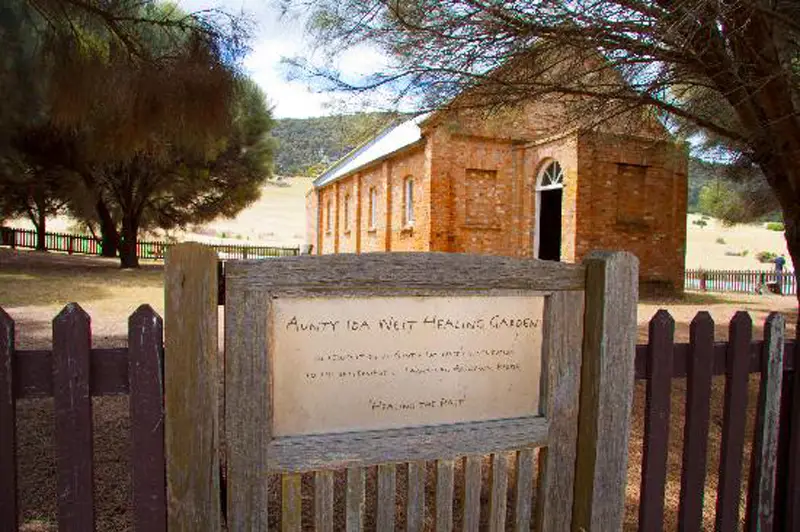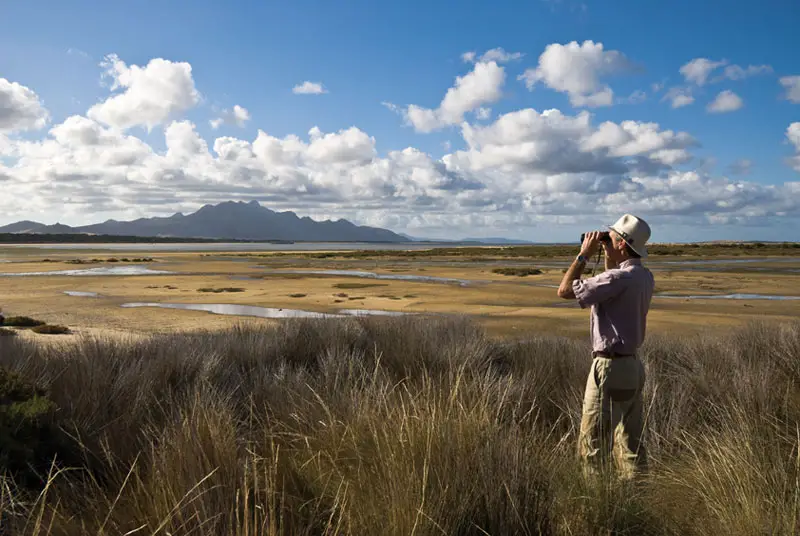Surrounded by over 50 mostly uninhabited islands, more than 65
shipwrecks and with over 120 pristine beaches, Flinders Island is a
great place for a relaxing, rejuvenating holiday, being set amid the
tranquillity of one of Australia’s idyllic natural settings. Not
many people live there, and not many people go there, so this is the
place to be if you don’t want to share your holiday destination
with the rest of Australia.
Around 900 people live on the island, with farming and fishing being
important industries. The farmers producing quality beef and lamb as
well as clean fine wool and the fishermen harvesting crayfish, abalone,
scallops and giant crabs. The major population centres are Whitemark
(which has the island’s main airstrip) and Lady Barron (the
port). A little over a third of the island is used for farmland,
with the remainder being National Park. Bushland, lagoons and coastal
reserves provide the visitor with a superb opportunity to explore and
images Flinders Island’s little changed natural setting, with an
abundance of wildlife and a fascinating history thrown in for good
measure.
Where Is it?
Flinders Island is located in Bass Strait off the north eastern tip of Tasmania and is part of the Furneaux Island group.

Things To See and Do
Patriachs Wildlife Sanctuary
Patriachs Wildlife Sanctuary: is the island’s only wildlife sanctuary. It is home to wallabies, wombats, possums and a variety of birds, including the native Cape Barren Goose (see picture bottom left). Kids can pat the friendly wildlife and feed them straight from the hand.

Trouser Point
Trousers Point is the most popular beach on Flinders Island. It’s the one place you can be guaranteed to find a bbq that is sheltered from the notorious roaring forties.
Palana Beach
Palana Beach is the most northern beach on Flinders Island and is a popular holiday destination for both locals and visitors. Enjoy the soft rolling waves, bbq facilities, and golden sand.
Killecrankie Bay
Killiecrankie Bay is famous for its topaz crystals (referred to as Killiecrankie diamonds), which can be found at Diamond Gully in crevices between rocks and by sieving the beach sand. This little haven is also perfect for a picnic and romantic stroll along the beach.
 Mt Strzelecki
Mt Strzelecki
About a third of the island is mountainous and rugged with ridges of granite running the length of the island. Mt Strzelecki, the island’s tallest mountain, stands 800 metres above sea level and is a great challenge for walkers of all fitness levels.
East Coast
Camerons Inlet and the East Coast: this is the nearest beach to Echo Hills and stretches for miles in either direction. It is also renowned for its surf fishing; locals often catch shark and flathead right off the shore. So grab a rod, and have a go.

History and Heritage
Naming The Island
Flinders Island was named on 8th January 1799 by British navigator and explorer, Matthew Flinders. The name was given not to honour Flinders himself, as is commonly believed, but his younger brother, Samuel Flinders, 2nd Lieut., Investigator.

Wybalenna
Flinders Island is steeped in Aboriginal history and few places in Tasmania have greater significance than Wybelenna. Behind Settlement Point lie the remains of Wybaleena, or Black Man’s Houses, established in 1832, as a place to put Tasmania’s aborigines that had been rounded up after the Black Wars of the 1830s. Here an unsuccessful attempt was made to Europeanise mainland Tasmanians; they were trained to speak English and eat western food. Naturally most died. Wybalenna Chapel is the oldest building on the island and has an indigenous graveyard only metres from the chapel wherev the poor sould who died here were laid to rest.
 Flinders Island Trail
Flinders Island Trail
Back in the early seventies an ambitious project created the
Flinders Trail running south to north of the island. The Trail included
opportunities for horse riding, walking and four wheel driving. While
the trail still exists some part are a challenge and need upgrading.
Efforts are underway to bring the Trail back as a great outdoor
experience and create another unique Flinders Island walk.
The Trail winds its way from the Strzelecki National Park to the North
East River and provides the visitor with great walks across mountain
ranges and along coastal beaches that include a variety of bird and
animal life as well as different vegetation types. There are
opportunities to stop off and study the history or find a Killiecrankie
Diamond or do a spot of fishing. Flinders Trail can be divided into
five sections linked to accommodation at Lady Barron, Whitemark Emita,
Killiecrankie and Palana.




